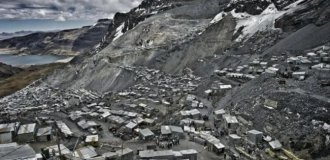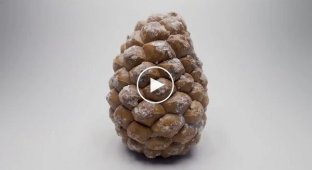How emperor penguins hatch eggs at −50°C with hurricane-force winds in Antarctica (7 photos)
How do emperor penguins hatch eggs? Through suffering and overcoming. These birds are some of the toughest animals I know. They avoid easy paths so much that they live in Antarctica, and breed in May-June, right in the middle of the polar night. The entire period of hatching eggs is 70 days of hunger, cold and constant fear in endless darkness. 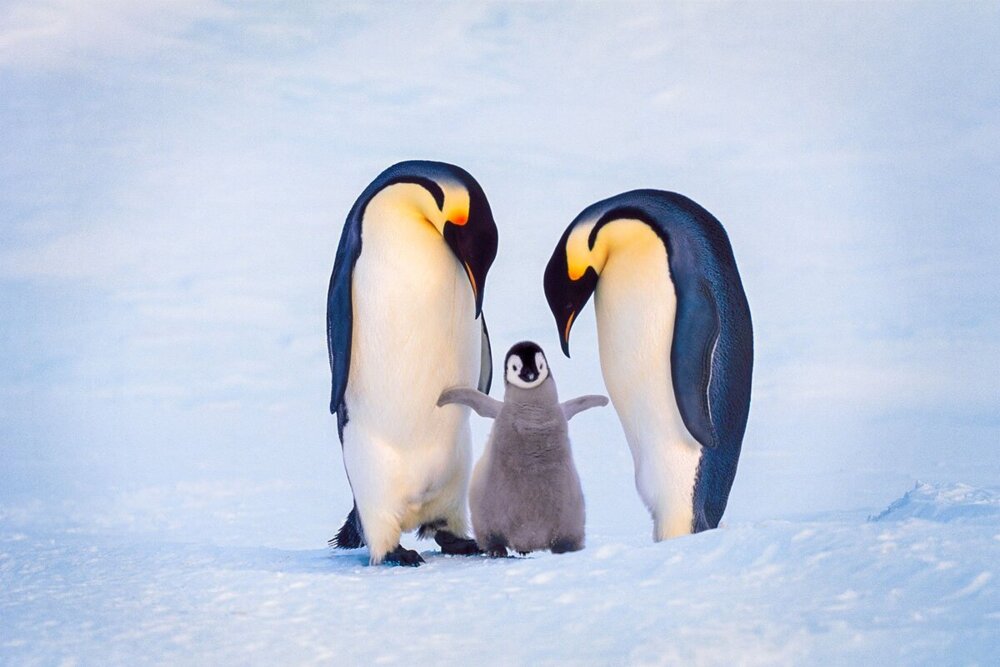
- Mom, dad, how was I born? - You’d better not know, otherwise you won’t want your children...
The operation to raise new emperor penguins begins with the arrival of all participants on warm beaches, where the temperature drops “only” to −50°C. While the penguins are breaking into pairs and the eggs in the females are maturing, about 50 days have already passed. And all this time the animals do not eat! Fortunately, the emperor penguin, ready for breeding, consists of at least 50% fat. 
We ate our fill of dumplings and are sitting happy!
The penguin lays only one egg, but its weight reaches 500 grams! But celebrating the birth of a baby will not be so easy. Yes, the shell of an egg makes up 15% of its total mass to protect the embryo from cold and falls. Yes, the baby does not swim in ordinary protein, but in a liquid with “antifreeze”, which prevents coagulation at critical temperatures. But even so, only 1-2 minutes on bare ice is enough for the future chick to freeze. Therefore, the female rolls the packaged embryo onto her paws and quickly covers it with her brood pouch. This is what scientists call the skin fold rich in blood vessels that warms the egg from above. 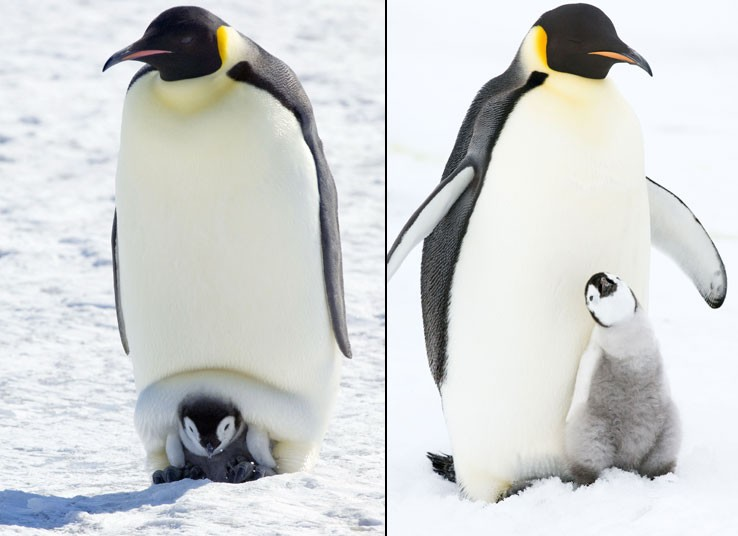
Grown-up chicks also hide in these pouches until they acquire their own fat reserves.
When the embryo warms up to about 30°C, the female transfers it to the male and sets off to the sea. Growing an egg and a long hunger strike undermined her strength. Males will have to survive without food for another 60-70 days. Waiting for your significant other to return is not only boring, but also difficult. The Antarctic wind accelerates to 55 m/s, and the temperature does not even think about rising. For reference: on the Beaufort scale, a hurricane is considered to be a wind whose speed is almost half that: 30 m/s. 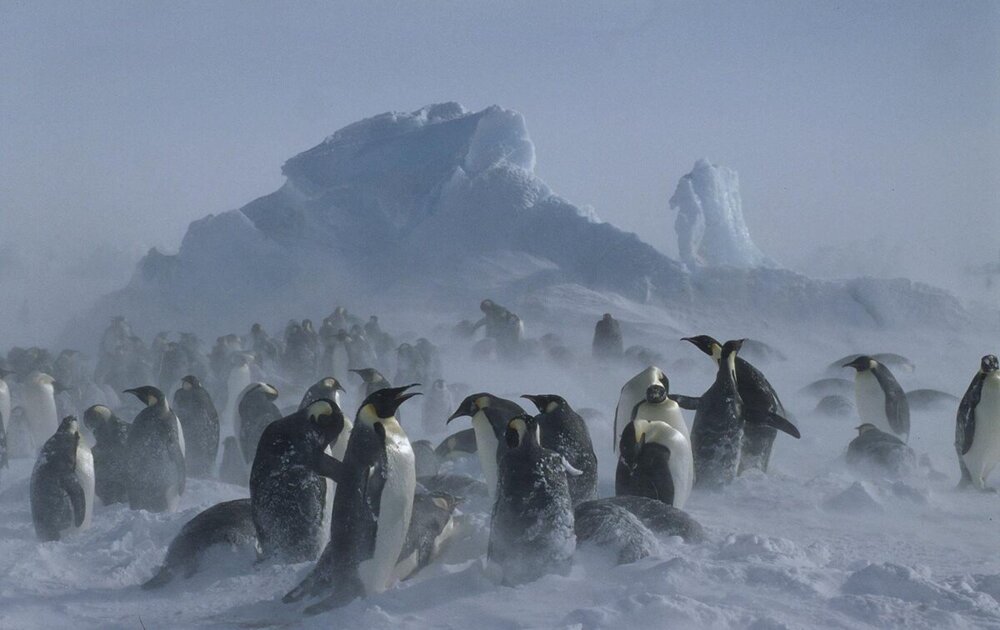
People! Get in line, otherwise we will all die!
In order not to freeze themselves and not lose their offspring, penguins huddle in dense heaps. And they do it so well that in the center of the colony the temperature can be 50°C higher than the ambient temperature. But if someone is warming up in the center, someone is freezing their back on the periphery. In the name of justice (and the survival of the colony), the penguins regularly switch places. Animals from the edge move closer to the center, and the central ones go to the very edge. 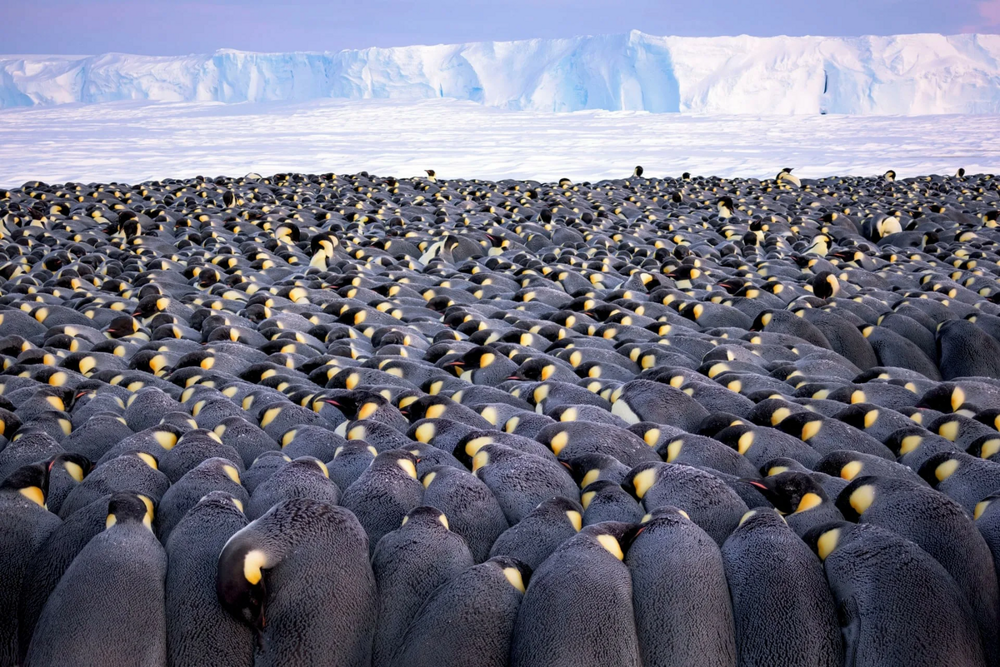
Bound by one chain, bound by one goal!
Due to the fight against the cold, constant movement and desperate attempts not to freeze the baby, the male loses up to 20 kilograms of fat in 2 months of life. But this is all a saying. The main difficulty is yet to come. The chick hatches on the verge of starvation. He struggled with the dense shell for several days, and his fluff does not provide adequate protection from the cold. 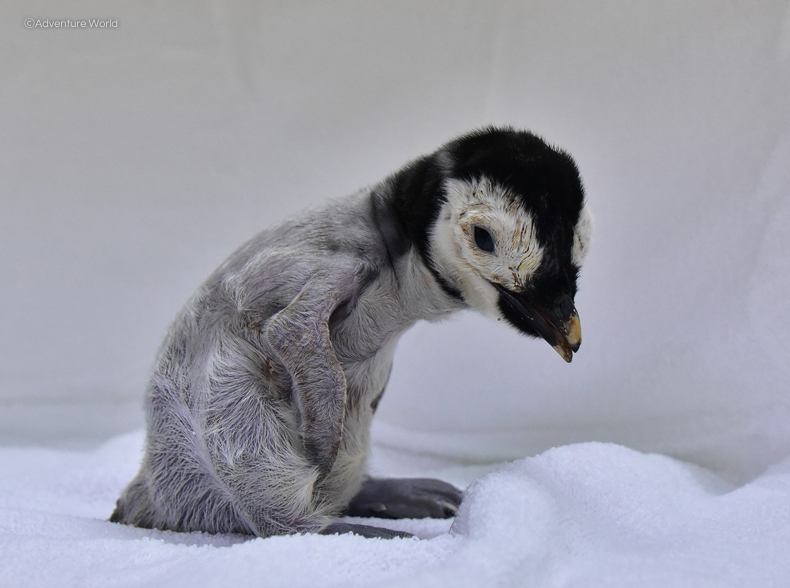
Well, how can such a baby withstand frost of −50°C.
The male, already depleted of his fat reserves, has to feed the child bird's milk - a mixture consisting of 28% fat and 60% protein. One thing is good: by this moment the temperature begins to rise, and the sun finally emerges from the horizon. 
When dad has been feeding with one ear for the fifth day.
Since the male himself has lost a lot of weight, this feeding will last him no more than 10 days. If the female does not have time to return by this time, the father will simply abandon the child and rush into the ocean to save his life. But, as a rule, females succeed. And from this moment on, the birds begin a normal family life: one parent feeds, the second protects the chick from petrels. But cunning birds still carry away up to a third of the chicks. But so much effort and labor has been put into each of them!










